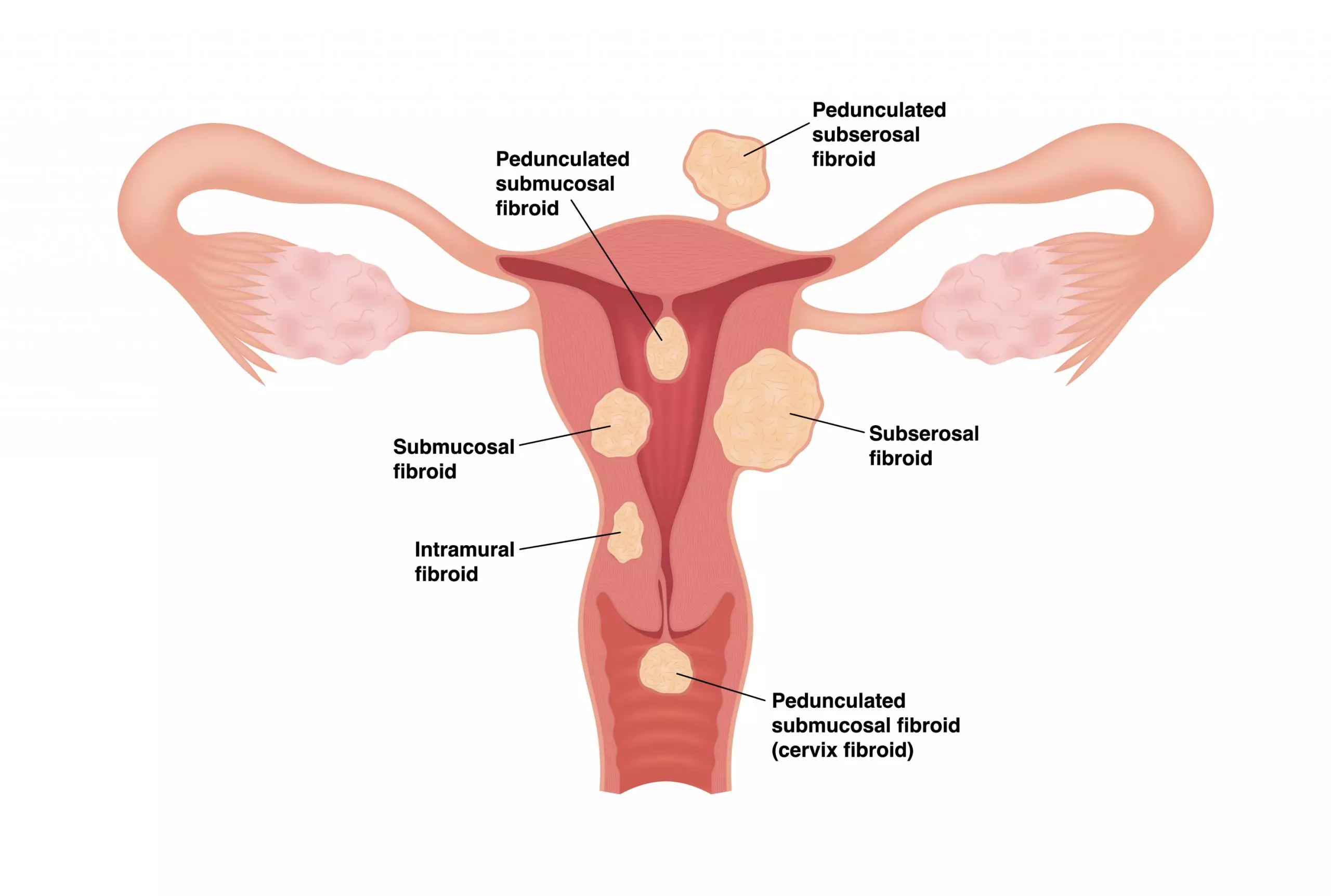What Are Intramural Fibroids?
The four main types of uterine fibroids are categorized by where they grow in or on your uterus, and how they are attached. Intramural fibroids (also called intramural leiomyomas) grow inside the uterine wall, which is a thick muscle. Here’s what you need to know about the nature, symptoms, and treatment of intramural fibroids.
About Intramural Fibroids
Intramural fibroids are the most common type of fibroid and, like other fibroids, they are noncancerous. They can grow in the front (anterior fibroid), back (posterior fibroid), or top (fundal fibroid) of the uterus. They tend to stay smaller than other types of fibroids, though they have the potential to grow quite large.
Since they are ensconced in the muscular uterus wall, intramural fibroids don’t usually protrude into your uterine cavity or bulge outward, distending your abdomen, unless they grow to 6 cm or more in diameter. They also typically don’t cause severe symptoms, but this, too, is not always the case.

This diagram shows where each type of fibroid is located in relation to the uterus
(This image is from Shutterstock.)
Symptoms of Intramural Fibroids
Intramural fibroids may not cause any symptoms at all, or they may cause:
- Heavy periods
- Prolonged periods and/or spotting between periods
- Feelings of fullness in your abdomen
- Pelvic and/or lower back pain
- Constipation
- Urinary issues
Depending upon their size and placement, intramural fibroids can interfere with fertility, pregnancy, and vaginal childbirth, by blocking your fallopian tubes, preventing a fertilized egg from anchoring to the uterus, and crowding out a developing fetus. If you are planning a pregnancy, find out where your fibroids are located, how many there are, and how quickly they are growing.
Diagnosing Intramural Fibroids
A gynecologist can often feel intramural fibroids while performing a routine physical exam. These fibroids can also be detected using ultrasound, an x-ray, or an MRI or CT scan. Imaging tests are more reliable for determining the number, location, and size of your fibroids.
Treating Intramural Fibroids
The standard medicinal, hormonal, and surgical treatments for symptoms of other types of fibroids also apply to intramural fibroids. The location of intramural fibroids deep inside the muscular uterine wall, however, can make them difficult to treat, both non-surgically and surgically. That said, the most effective and commonly-recommended treatments for intramural fibroids are:
- Hormonal therapies such as birth control pills and gonadotropin-releasing hormone agonists (GnRH)
- Uterine fibroid embolization (UFE)
- Laparoscopic or robotic myomectomy
Major surgery, specifically abdominal myomectomy or hysterectomy, may be necessary in some cases.
If you are experiencing symptoms that interfere with your quality of life or family planning, speak with your healthcare provider about which treatment option(s) may be best for you.


